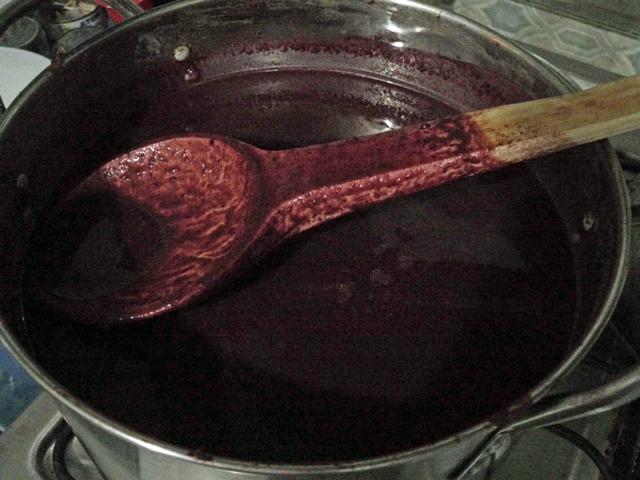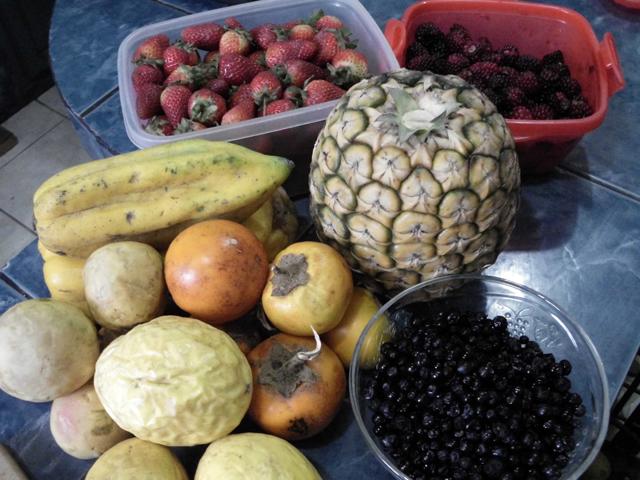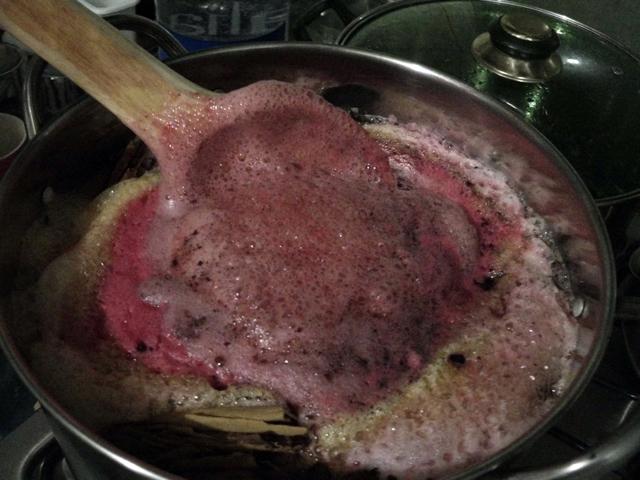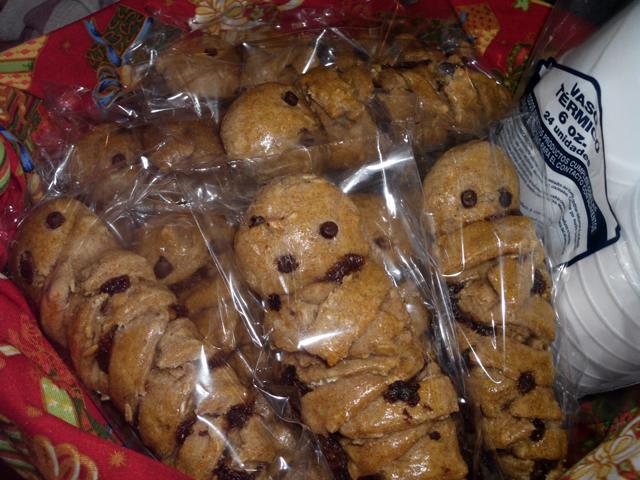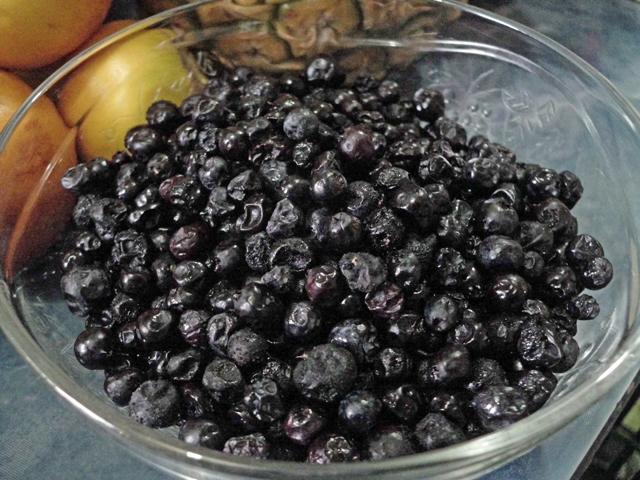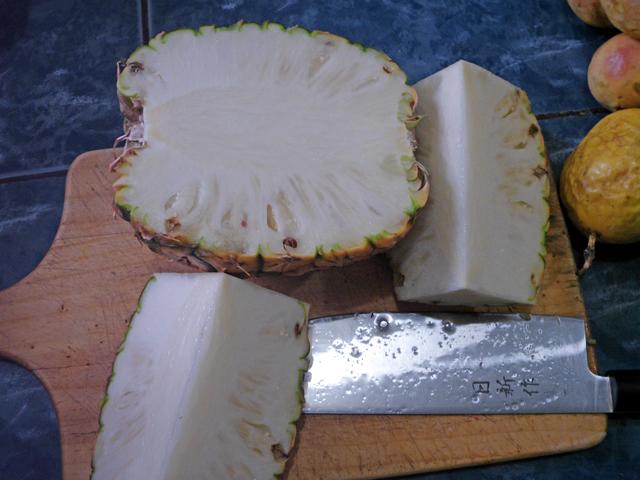-
Posts
2,383 -
Joined
-
Last visited
Content Type
Profiles
Forums
Store
Help Articles
Everything posted by Panaderia Canadiense
-
Radishes might also fit there, as would carrots - both live on the spicy-sweet end of the spectrum. Raw beetroot is another interesting option to consider, as are dandelion greens for the bitter end of the spectrum.
-
Classic green mint chip ice-cream is with Spearmint, not Peppermint, and there is a difference in the flavour profiles - spearmint is rounder somehow with more menthol-type overtones, while peppermint (as the name suggests) has an up-front peppery flavour and seems more "spicy" than other mints.... Wintermint isn't properly mint at all, either, if we're talking about the same essence. It's oil of wintergreen or methyl salicylate (if it's synthetic), which is vaguely mintish but not the real deal. It's a great flavour for candies, though (but even though it's probably my favourite flavour, I'm not fond of it with chocolate for some reason.)
-
Oh god. I can't get 'em down here, but Girl Scout Thin Mints are another one of my commercial-cookie kryptonites.
-
I'm embarrassed to say it, but Nestle Tango. The classic ones with the vanilla cookies and chocolatey coating, thanks.
-
Next time that happens, the Ecuadorian fix is pilsener-type lager and pureed carrots - this produces a sauce typical of coastal "secos" (meat stewed in light sauce) which is really really tasty with lamb or goat, and does amazing things to tough cuts of beef.
-
Shel - if you use the kind of peanut butter that is just peanuts, salt, and maybe a little oil, then yes. If you're into the sweet gakk, then no.
-

Things from Infomercials that are useful in your kitchen
Panaderia Canadiense replied to a topic in Kitchen Consumer
On the definite plus side: I've got a Slap Chop; it's the same sort of creature as other plunger-choppers, but it's got one major advantage - the sides of the thing open outwards to make it easier to clean above the blades (where stuff seems to get stuck easily during operation.) I've also had LaLane power juicers, which only got left behind when I moved because they were too heavy - the Kitchenaid was coming, but I couldn't justify the juicers too. I've also got a Eurosealer, which is a handheld heat-sealing iron, and that was probably the best $20 I've ever spent at "As Seen on TV" (I've never actually ordered from an infomercial, but the store in the mall is another thing....) On the definite minus side: any of the "time saving" egg cracker/separator devices (too many to name!), and I had a hot-air popcorn popper that gave up the ghost the moment I plugged it in.... -
Yes, but only if you're eating the excretions, rather than the things you're using them to fertilize.... As a species, we do actually eat excreta in some forms (Aspartame comes to mind; it's bacterial excreta) but in all honest I'd far rather have a plate full of tomatoes than a plate full of the cuy fertilizer I use on them.... It would be better for me, too. Unlike dogs, our digestive systems are not set up to process "recycled foods" that way. ETA - I don't usually take the skin off of my pork belly unless I want chicharrones; I don't eat a whole lot of pig skin, but it does add a certain something to fritadas that would be completely absent otherwise....
-

Environmentally Friendly Kitchen and Household Products
Panaderia Canadiense replied to a topic in Kitchen Consumer
See, and I thought it would be a thread on things like lemons, baking soda and vinegar as household cleaners.... -
How tremendously sad. My condolences to Linda and Rupert - Dave touched all our lives, even if only briefly, and he will be sorely missed.
-
Most, not all - some of the stuff I've eaten would have been far too big to cook whole (swordfishes, yellowfin tuna, mahi mahi, wahoo, sharks).
-
Most of the Latin American squashes are related in some way, Huiray. Given how promiscuoulsy they crossbreed, along with the huge trade in such things by the pre-Incan and pre-Columbian cultures, I wouldn't be too surprised if they've got South American roots in there somewhere. Judging from flavour and looks, it's probably mostly C. pepo with maybe a little C. maxima thrown in for good measure and skin colouration; this is typical of the Latin American squashes. Oddly enough, my first thought on seeing the ones in this thread was "they're awfully small" - the ones I see in market start about 1 kg and go up from there. The freshest ones are greenish with yellowish ribs, and they get all pumpkin-y as they mature. Then again, I shop at markets renowned for their big produce, so my experience with the giants might be the aberration rather than the rule. We've been talking about the C. maxima squashes here on the eGullet lately; these are very good examples since in my market they start at 5 lbs and go up from there; I typically buy 25 pounders for use in pies and pumpkin-type applications (we do have true pumpkins here as well, but there's less meat to them than kombus.) Ecuador for one has a huge trade in food with China as well as with North America, so I'd not be at all surprised to learn that they came from my side of the pond. However, squashes are now cosmopolitan in distribution so Liuzhou might also be seeing domestic product.
-
Liuzhou - wish I'd seen this thread earlier! Those are called "Zapallo del Sol" (pumpkin of the sun) in Ecuador.
-
Lightly steamed and then drizzled with dill-olive oil-red wine vinegar, has to be one of my faves for beets. It's so sad that they're scarce where you are - here they practically give 'em away.
-
People start drinking Colada Morada around mid-October, kind of like eggnog in the US or Canada. However, the peak of consumption comes between the 31st of October and the 2nd of November, which is the actual holy-day period (all saints' eve, all saints, and all souls). The batch made upthread was consumed within 24 hours of making it - starting in the third week of October, I sell Colada and Guaguas as part of my office coffee-break service. I've gone through about 6 gallons of it this week alone (along with about a hundred bread babies), and the demand will only rise from here. It actually holds fairly well - it can be made up to 3-4 days in advance without flavour loss, and I actually can it (well, put it up into glass jars) for when I get a hankering in June and there are no fresh mortiños in the market or frozen ones in my freezer.
-
Smithy - the persimmon-looking things are the Naranjillas, which are a fruit in the tomato family (Solanum quitoense to be precise) that's native to Ecuador and southern Colombia. Despite the name (which means little oranges), they have little to do with citrus of any kind besides being smallish and orange in skin colour - they're greenish and quite seedy inside, and the flavour is bittersweet, slightly sour, aromatic, and just slightly cape gooseberry-ish (it is a very difficult to describe flavour, but given a bit of sugar to balance the bitterness they're extraordinarily tasty, and Naranjilla is in fact one of the most popular juice flavours in Ecuador.)
-
And I realize that I said "herb water and spices" and then didn't fill you in on what all that entails. The herb water is essentially a way of introducing extra flavour without extra bulk, and it's used to help liquify the fruits in the blender. An herb bundle for Colada Morada typically consists of: Arrayan: a type of fragrant native myrtle; it has a pleasantly resinous and citrus flavour and is astringent without being too drying. Sort of like sweeter rosemary with overtones of incense. Toronjil: I can never remember if this is lemon balm or lemon verbena! Melissa tripartita, I think.... Lemon leaves: fairly self-explanatory; they generally come with twigs attached. Sanguarachi: Red amaranth. For both the bright red colour and the mild spinachy flavour. Lemongrass: if you're using naranjilla fruit, add lemongrass. The spices, on the other hand, go in the pot and provide a bass note to the proceedings. Ishpingo: the bracts of the flowers from the Ecuadorian amazon cinnamon tree. They're like smokey cinnamon with a hint of clove. Cinnamon bark: also from the Ecuadorian amazon cinnamon tree. And the leaves, if you can get your hands on 'em. I couldn't. Cloves, star anise, and whole allspices round out the spices.
-
Smithy - those are Guaguas de Pan of my own design, in their own little cellophane bags to keep the ash off. They're honey whole wheat bread stuffed with chocolate-walnut goo; I'll also be making pumpernickel with sweet peanut butter filling, and challah with cinnamon-raisin babka filing.
-
Well, while I'm accumulating a gallery of Guaguas de Pan (and yes, Smithy, a lot of Quichua words are onomatopoeic!), let's talk Colada Morada. This is a decidedly heavy drink made up from anything between 5 and 9 fruits (odd numbers are considered more auspicious than even ones, for reasons nobody has been able to explain to me yet), herbs, spices, dark panela, and blue or black corn flour. It is a pre-Incan tradition in Ecuador that has survived to modern times, and incorporates at least two fruits which are only found here - the Mortiño, a slightly bitter highland blueberry, and the Babaco, a relative of the papaya. Colada is the Ecuadorian term for any grain drink where the grains, usually in flour form, are allowed to hydrate overnight in the liquid so as to form a colloid; Morada literally means "bruised" or "purple". I was taught the recipe I use by a grandmother from Cuenca (a city known for the most complex recipe), who included a few interesting superstitions with the lesson. For instance, Fidelina taught me that there are two kinds of strawberries: fresa and frutilla. Fresa are the big, Hollywood-looking berries that are normally sold in the mercados for fruit salads and garnish. Frutilla are closer to wild strawberries - tiny, not necessarily pretty, but absolutely bursting with flavour. Fresas have no soul, according to Fidelina, so they've also got no place in Colada - berries with no soul won't make a good transition to the other side for your ancestors. She had similar things to say about substituting imported blueberries from Chile for the wild-harvested Mortiños from our own páramos - you can do it, but you're cheating your ancestors if you do. My recipe calls for the maximum number of fruits advisable for maximum flavour. Picture above are the ones I use: white pineapple, naranjilla, red guava, maracuyá, babaco, frutilla, mortiño, and mora. This is an even number, but the capulí cherries that make up the total to nine are not quite ready to pick. They will be included in my later batches of the drink. A note about pineapples: Fidelina holds that there should be no substitute for the white pineapple in Colada Morada - it is slightly sweeter and a bit tangier than gold, and balances the mixture of flavours better. These are mortiños. As you can see, they're quite a bit smaller than North American blueberries; they're also much much more concentrated in flavour and slightly more bitter. This year was a good season for them (meaning that it was nasty cold and rainy for at least 6 months up in the páramo) - they're plump and quite juicy, and larger than they could be.... All of that gets juiced in the blender with herb water, and strained into a big stockpot. Then it's boiled until the foam dissipates and the panela is fully dissolved, the spices are strained out (or scooped, your preference), and about a pound of blue cornflour per gallon is mixed in - I use my immersion blender to keep it lump-free. Then the colada cooks for about another hour over low heat until the cornflour starts to thicken it, and is allowed to rest overnight.
-
I really like the traditional, not all that shiny black metal pans, with a bit of butter by way of greasing. I don't do parchment with salt breads - it's redundant and in very high hydration loaves actually counterproductive. Mine are simple folded steel jobbies that I bought from my local tin bender.
-
Very very few Ecuadorian restaurants offer dessert as a menu option; when they do it's rarely something made in-house (and I can tell you this from personal experience - I supply desserts to a couple of the very few in my city who do offer them). It's normal. This said, if you can produce desserts in house, they're crazy profitable. However, that profit declines in accordance with how much of a given dessert diners will consume before it becomes un-serveable (viz a 16 piece cake; this will be good for about 3 days and god help you if nobody orders cake!)
-
Darienne: thanks for pointing this out - I spend so much time speaking Ecuadorian Spanish that it's sometimes good to remember that most people don't. Hence, a small glossary for my non-English terms up to now. Colada Morada: a multiple-fruit drink, always containing Mortiños, thickened with blue corn flour. Only available around Día de los Difuntos, which coincides with the (very short) harvest season of Mortiños. About this, more later. Those curious about the recipe can take a look at my first foodblog, which details the process. I'll be recapping Colada here later today, once I've had a moment to download my camera. Mortiño: the fruit of Vaccinium floribundum, the Ecuadorian páramo blueberry. These plants are not cultivated anywhere; they're wild harvested and the location of the best patches is jealously guarded by the families who harvest them. Guagua de Pan: literally "bread baby" - guagua, pronounced "wah-wah" is Quechua for baby. PreIncan (also Pre-Incan): the cultures before the Incan invasion. In my area, that's the Hambatu, Izamba, Huachi, Quisapincha and Atocha peoples; their traditions were largely absorbed by the Inca (whose descendants are the modern day Quechua culture). Ambato takes its name from the Hambatu (frog) people; the community I live in takes its name from the Huachi, and the other major sectors of the city are Izamba, Quisapincha, and Atocha. Sahumerio: a type of incense based on resins and fragrant woods, generally with 7 components (I can't recall them offhand, but it definitely includes frankincense, myrrh, benzoin, and palo santo). It's the typical incense of the churches, but on special occasions - particularly Semana Santa (Easter), Difuntos, and Christmas, it also becomes available to the public. The word "sahumerio" comes from the verb that means "to fumigate." Palo Santo: the wood of Bursera graveolens, a fragrant tree native to Ecuador that's in the same family as frankincense and myrrh. Palo santo literally means "holy stick" and it's either used on its own or as a component of ritual incenses.
-
It's the end of the blossom period, when the small fruits are visible on the trees. If there are lots of little fruits, we celebrate because the harvest will be good that year. Colada Morada, which I will get into more depth on a bit later as Difuntos progresses, is a multiple-fruit drink/jam/fruity liquid thickened with blue corn flour. It's similar in character to Mexican atole drinks, but colada is to atole as Shakespeare is to Pinter....
-
I'll weigh in from Ecuador, where the festivities are starting to get underway. I'm in Ambato, which has a huge tradition; the first of the guagas de pan (bread babies) have started to appear in local panaderías and on Monday colada morada will also start to be available. Between now and Difuntos this will only get crazier, and I'm in the fray this year with my own basket of guaguas and jug of colada, so I'll be able to post pictures of the selling atmosphere. Like the skulls in México, the guaguas are perhaps the most picturesque of the food traditions here; I'll try to get photos of as many different versions as I can - they're as unique as the bakers' fingerprints. Ecuador is another very Catholic country, but our celebration of Difuntos has a distinct Quichua flavour; souls return each year to advise the living and help to celebrate the harvest (Difuntos for Ecuador supplants the original Incan and PreIncan festival celebrating the harvest of Mortiños, black corn, barley, quinua, and the setting of the stonefruit). Our cemeteries will be filled with roses and other wildflowers to call the souls home, and sahumerio and other incenses, particularly palo santo, will be burning as well - the cemeteries actually smell amazing in this season. This year is particularly auspicious for Difuntos in my province - tradition holds that if Mama Tungurahua (the volcano from whom the province takes its name) is awake when the souls are called home, the journey is easier for them. She is most definitely up and about this year, which means the festivities will be even larger - even though very few celebrants will admit it, Mama Tungurahua is still a god; her presence is a blessing to the returning souls. In Tungurahua at least, along with the church bells people will let off firecrackers to guide the souls home. And like Nancy has noted in México, there is an area of each cemetery here as well for those who wish to leave offerings and communicate with those souls who are not buried there. This year will be the first where I can leave a pair of guaguas and clay cups of colada, for my grandparents who passed on earlier this year. Oddly enough, the guaguas and colada (which are a holdover from the original harvest festival - they're a way of sharing the harvest with the ancestors) are also a good example of how the Catholic culture absorbed the indigenous traditions. Now they also stand for a sacrament for the dead; the guaguas of November 2 are consecrated in a huge mass as the body of Christ, and the colada as the blood of Christ. I find it more than a little bit creepy that traditional guagas are stuffed with guava paste, and therefore actually bleed a little when you bite them.... This doesn't stop me from participating, though.



